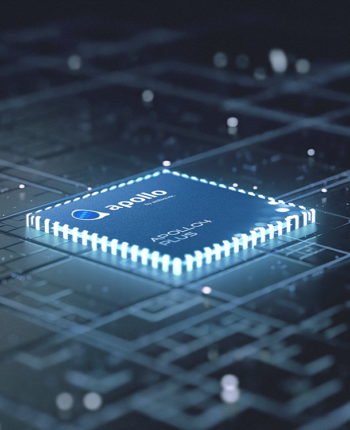How Much You Need To Expect You'll Pay For A Good Neuralspot features
How Much You Need To Expect You'll Pay For A Good Neuralspot features
Blog Article

DCGAN is initialized with random weights, so a random code plugged in the network would produce a very random graphic. Having said that, while you might imagine, the network has millions of parameters that we could tweak, plus the target is to locate a location of those parameters which makes samples created from random codes look like the schooling knowledge.
Will probably be characterised by lessened blunders, better decisions, as well as a lesser period of time for browsing information.
In a very paper printed At first of your 12 months, Timnit Gebru and her colleagues highlighted a series of unaddressed problems with GPT-3-type models: “We check with whether enough assumed has been place into your prospective dangers linked to producing them and approaches to mitigate these threats,” they wrote.
AI attribute developers experience many specifications: the function need to fit inside a memory footprint, meet latency and precision demands, and use as minimal Power as feasible.
Apollo510, according to Arm Cortex-M55, provides 30x improved power performance and 10x quicker functionality compared to past generations
Ashish is often a techology expert with thirteen+ a long time of knowledge and focuses primarily on Info Science, the Python ecosystem and Django, DevOps and automation. He concentrates on the look and delivery of crucial, impactful courses.
Our website employs cookies Our website use cookies. By continuing navigating, we presume your permission to deploy cookies as comprehensive in our Privateness Coverage.
One of many commonly employed sorts of AI is supervised learning. They contain teaching labeled information to AI models so that they can forecast or classify matters.
Other Added benefits incorporate an improved effectiveness across the general technique, diminished power finances, and decreased reliance on cloud processing.
Quite simply, intelligence needs to be offered through the network all of the strategy to the endpoint at the supply of the information. By expanding the on-product compute abilities, we are able to superior unlock serious-time knowledge analytics in IoT endpoints.
They are really at the rear of image recognition, voice assistants and even self-driving automobile technological innovation. Like pop stars within the tunes scene, deep neural networks get all the attention.
Besides having the ability to produce a video solely from textual content instructions, the model will be able to acquire an current still graphic and produce a video from it, animating the impression’s contents with precision and a spotlight to Digital keys modest detail.
Visualize, As an example, a situation the place your preferred streaming platform suggests an Totally amazing movie for your Friday evening or any time you command your smartphone's virtual assistant, powered by generative AI models, to answer effectively by using its voice to know and reply to your voice. Artificial intelligence powers these day-to-day wonders.
New IoT applications in a variety of industries are building tons of data, and also to extract actionable value from it, we could not trust in sending all the information back again to cloud servers.
Accelerating the Development of Optimized AI Features with Ambiq’s neuralSPOT
Ambiq’s neuralSPOT® is an open-source AI developer-focused SDK designed for our latest Apollo4 Plus system-on-chip (SoC) family. neuralSPOT provides an on-ramp to the rapid development of AI features for our customers’ AI applications and products. Included with neuralSPOT are Ambiq-optimized libraries, tools, and examples to help jumpstart AI-focused applications.
UNDERSTANDING NEURALSPOT VIA THE BASIC TENSORFLOW EXAMPLE
Often, the best way to ramp up on a new software library is through a comprehensive example – this is why neuralSPOt includes basic_tf_stub, an illustrative example that leverages many of neuralSPOT’s features.
In this article, we walk through the example block-by-block, using it as a guide to building AI features using neuralSPOT.
Ambiq's Vice President of Artificial Intelligence, Carlos Morales, went on CNBC Street Signs Asia to discuss the power consumption of AI and trends in endpoint devices.
Since 2010, Ambiq has been a leader in ultra-low power semiconductors that enable endpoint devices with more data-driven and AI-capable features while dropping the energy requirements up to 10X lower. They do this with the patented Subthreshold Power Optimized Technology (SPOT ®) platform.
Computer inferencing is complex, and for endpoint AI to become practical, these devices have to drop from megawatts of power to microwatts. This is where Ambiq has the power to change industries such as healthcare, agriculture, and Industrial IoT.
Ambiq Designs Low-Power for Next Gen Endpoint Devices
Ambiq’s VP of Architecture and Product Planning, Dan Cermak, joins the ipXchange team at CES to discuss how manufacturers can improve their products with ultra-low power. As technology becomes more sophisticated, energy consumption continues to grow. Here Dan outlines how Ambiq stays ahead of the curve by planning for energy requirements 5 years in advance.
Ambiq’s VP of Architecture and Product Planning at Embedded World 2024
Ambiq specializes in ultra-low-power SoC's designed to make intelligent battery-powered endpoint solutions a reality. These days, just about every endpoint device incorporates AI features, including anomaly detection, speech-driven user interfaces, audio event detection and classification, and health monitoring.
Ambiq's ultra low power, high-performance platforms are ideal for implementing this class of AI features, and we at Ambiq are dedicated to making implementation as easy as possible by offering open-source developer-centric toolkits, software libraries, and reference models to accelerate AI feature development.

NEURALSPOT - BECAUSE AI IS HARD ENOUGH
neuralSPOT is an AI developer-focused SDK in the true sense of the word: it includes everything you need to get your AI model onto Ambiq’s platform. You’ll find libraries for talking to sensors, managing SoC peripherals, and controlling power and memory configurations, along with tools for easily debugging your model from your laptop or PC, and examples that tie it all together.
Facebook | Linkedin | Twitter | YouTube Report this page